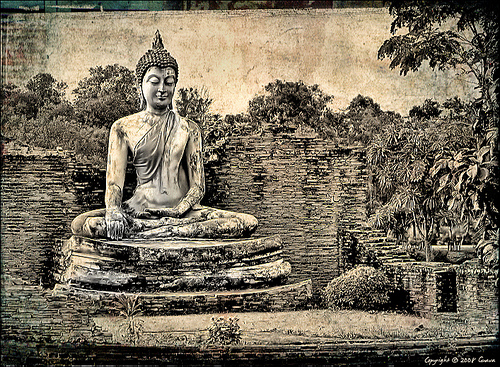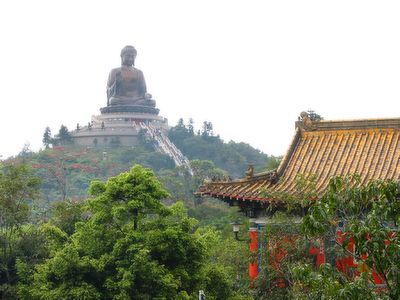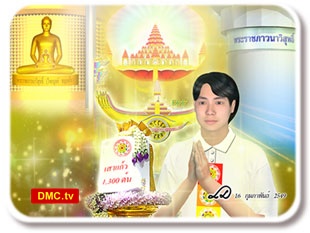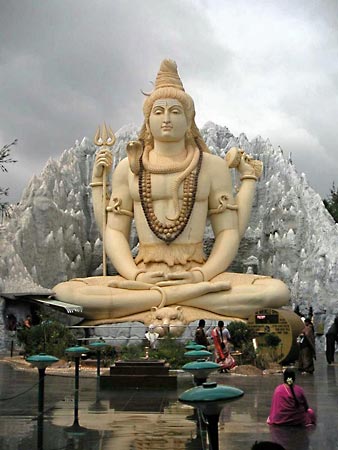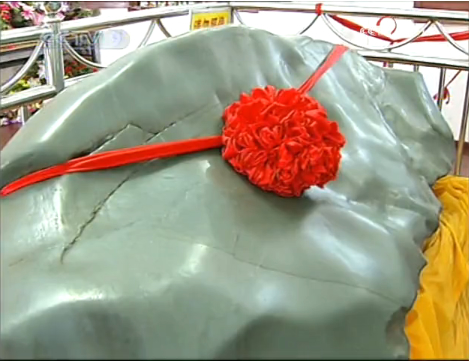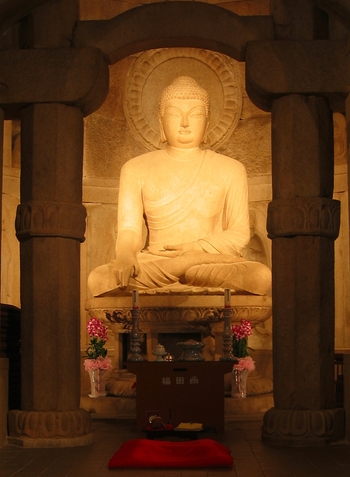 ภาพประกอบจากอินเทอร์เน็ต
ภาพประกอบจากอินเทอร์เน็ตPyongyang,
June 1 (KCNA) -- The first sokgul temple (stone Buddha grotto) showing
extraordinary artistic talent of the Korean ancestors has of late been
discovered in the DPRK.
Sokgul temple is a small natural or artificial stone-cave temple. The sokgul temple was erected for the purpose of mystifying and permanently preserving Buddhist idols and other graven images and of holding religious rites even in bad weather.
The ThonggyongsanSokgulTemple is located about three kilometers northeast of Chojang-ri in Kwaksan County, North phyongan (P'yo'ngan) Province. Its terrain looks like a tiger in a crouch.
A 9-meter-high and about 7-meter-wide stone stands in incline on the left hand of the entrance to the nearly 3.3-meter-high sokgul temple and two big stones stand on its right hand.
Seven Buddhist images are carved in relief inside the temple.
In particular dignified three Amitabha images and their hand-manners are described delicately like living ones.
So vivid and exquisite is the sculpture of a lotus-flower-shaped stand, which gives a feeling of viewing lotus flowers in full bloom on the surface of the water, and others.
The ThonggyongsanSokgulTemple, built in a natural cave in the period from the end of Koryo to the beginning of Ri Dynasty, shows well the then architecture, sculpture, religion and the like.
Only the Kyongju and KunwiSokgulTemples and other sokgul temples have been widely known in Korea.
The newly-discovered sokgul temple proves once again the time-honored cultural commonness of the Korean nation.
Sokgul temple is a small natural or artificial stone-cave temple. The sokgul temple was erected for the purpose of mystifying and permanently preserving Buddhist idols and other graven images and of holding religious rites even in bad weather.
The ThonggyongsanSokgulTemple is located about three kilometers northeast of Chojang-ri in Kwaksan County, North phyongan (P'yo'ngan) Province. Its terrain looks like a tiger in a crouch.
A 9-meter-high and about 7-meter-wide stone stands in incline on the left hand of the entrance to the nearly 3.3-meter-high sokgul temple and two big stones stand on its right hand.
Seven Buddhist images are carved in relief inside the temple.
In particular dignified three Amitabha images and their hand-manners are described delicately like living ones.
So vivid and exquisite is the sculpture of a lotus-flower-shaped stand, which gives a feeling of viewing lotus flowers in full bloom on the surface of the water, and others.
The ThonggyongsanSokgulTemple, built in a natural cave in the period from the end of Koryo to the beginning of Ri Dynasty, shows well the then architecture, sculpture, religion and the like.
Only the Kyongju and KunwiSokgulTemples and other sokgul temples have been widely known in Korea.
The newly-discovered sokgul temple proves once again the time-honored cultural commonness of the Korean nation.
ที่มา-http://mingkok.buddhistdoor.com/en/news/d/1098


